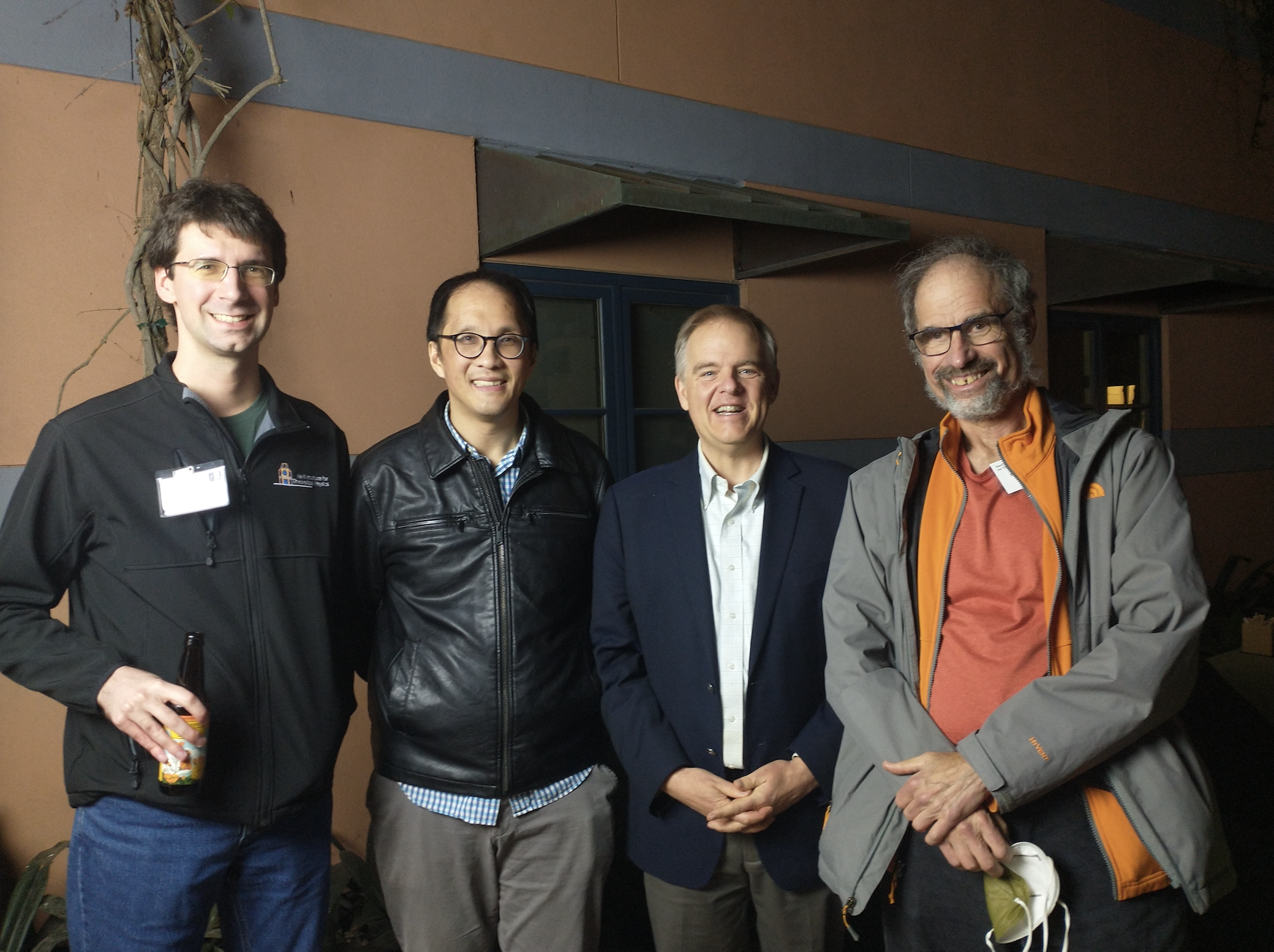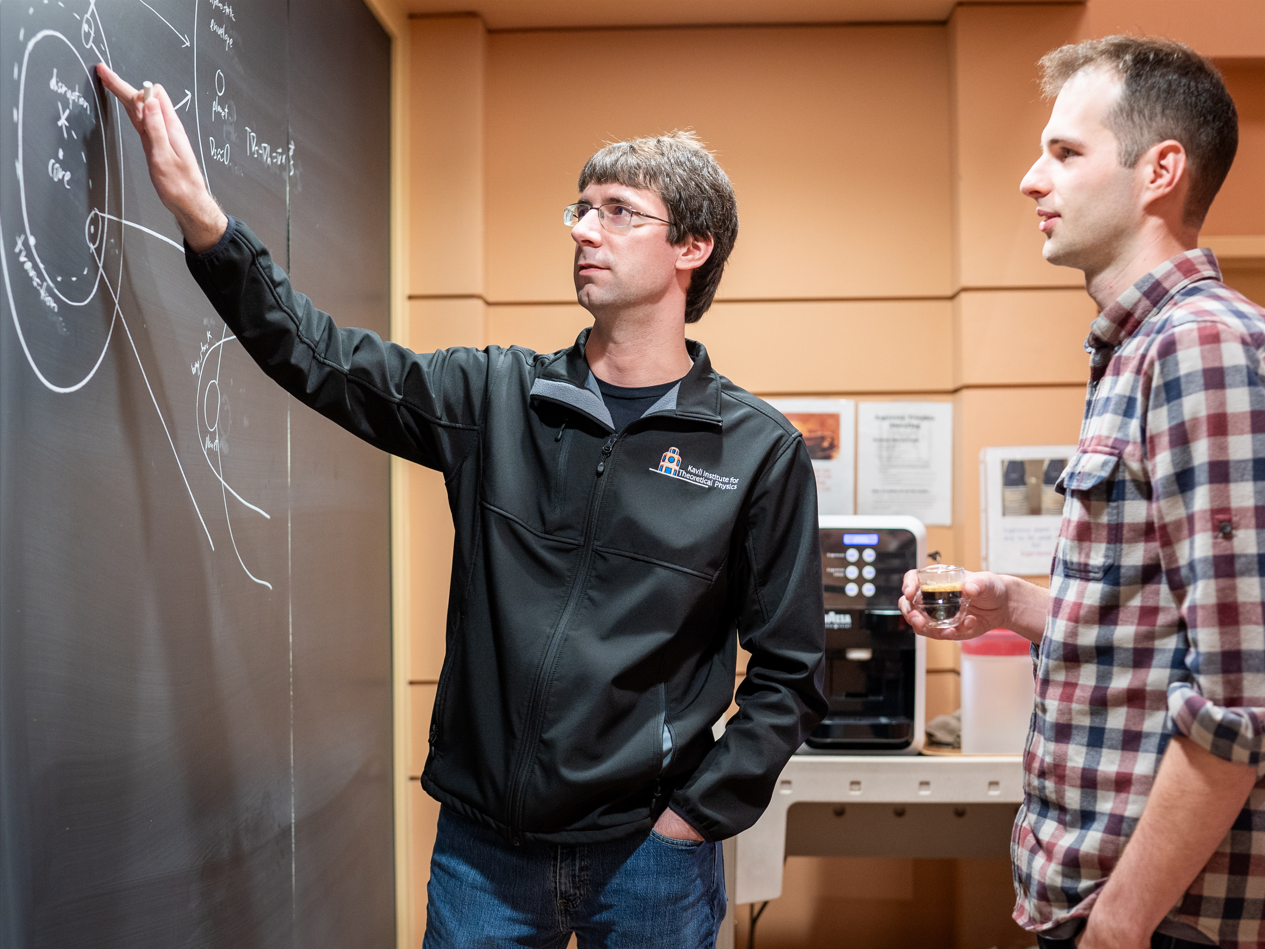Hello! I am a theoretical astrophysicist interested in astrophysical fluids and how they can be modeled by numerical hydrodynamics. I study a variety of phenomena including binary stellar interactions, supernova remnants, and accretion flows. I'm an active developer of the moving-mesh code MANGA and a member of the N-Body Shop collaboration.
I am currently a Flatiron Research Fellow at the Center for Computational Astrophysics. I was a postdoctoral scholar at the Kavli Institute for Theoretical Physics at UC Santa Barbara from 2022 to 2025. I completed my PhD in Physics in 2022 at the University of Wisconsin-Milwaukee under the advisement of Dr. Philip Chang. My thesis was titled Simulating the Common Envelope Phase Using Moving-Mesh Hydrodynamics. I graduated from Iowa State University (Go Cyclones!) in 2016 with bachelor of science degrees in Aerospace Engineering, Physics, and Mathematics.
In my free time, I enjoy playing Dungeons & Dragons and reading sci-fi/fantasy novels. I also played the trombone for ~15 years, though I am a bit out of practice now.
Check out my Github, ORCiD, and Physics Tree pages!
Common Envelope Evolution
Common envelope evolution (CEE) is a phase in the life of a binary star system in which a giant star shares its gaseous envelope with a small companion object, such as a main sequence star or white dwarf. This process plays a role in the formation of many objects of interest to astronomers, including:
- double white dwarfs
- X-ray binaries
- binary neutron stars
- binary black holes
- progenitors of type Ia supernovae
- planetary nebulae
We carry out simulations of the common envelope phase using the moving-mesh code MANGA, with the goal of determining the efficiency with which the envelope is ejected and to find a mapping from the initial state of the binary to its final separation. The stellar evolution code MESA is used both to determine the initial structure of the giant and to provide an equation of state for the gas.
Publications: Prust & Chang (2019), Prust (2020), Valsan et al. (2023)
Planetary Engulfment
Similar to common envelope evolution, it is also possible for a post-main sequence star ascending the giant branch to engulf one or more of its inner planets. The planet spirals into the giant due to drag, ultimately leading to its destruction and a temporary increase in the size and luminosity of the giant. We use the adaptive mesh refinement code Athena++ to perform "wind-tunnel" simulations of the interaction between the planet and surrounding envelope.

The flow around an engulfed planet depends largely on the ability of its gravitational pull to accrete stellar material against the immense ram pressure from the oncoming fluid. In the outer envelope, gravity is strong enough to cloak the planet in a pseudo-hydrostatic halo of gas adorned by a bow shock. As it spirals in, this halo is gradually stripped off and the bow shock moves inward toward the planet surface until an abrupt transition takes place. Here a recompression shock forms behind the planet, deflecting the flow outward and creating a low-density bubble behind the planet. These two distinct morphologies are also described by different models for the drag on the planet due to both ram pressure and dynamical friction.
Publications: Prust & Bildsten (2024)
Bondi-Hoyle Accretion
Objects moving though a gaseous medium accrete matter from their surroundings, and knowledge of the accretion rate is important for understanding the growth and dynamics of a variety of objects. We study accretion flows using the adaptive mesh refinement code Athena++ and the moving-mesh code Arepo.

We find that for moving accretors which are small relative to their sphere of gravitational influence (e.g. black holes), the streamlines entering the accretor are essentially radial. This has the surprising consequence that the accretion rate is independent of Mach number for black holes which are moving subsonically, depending only on the gas entropy. For supersonic motion, shock waves are present which raise the entropy and thus lower the accretion rate.
Publications: Prust et al. (2024)
Frame-Dragging in Magnetar Disks
Superluminous supernovae are thought to be driven by a magnetar central engine fed by an accretion disk. The disk may be misaligned with the magnetar spin due to a natal kick, leading to precession of the disk due to a prediction of general relativity known as the Lense-Thirring (LT) effect (a.k.a. frame-dragging). The recent superluminous supernova 2024afav showed oscillations consistent with the LT effect, providing the first observation of the LT effect in any object besides a supermassive black hole (and the Earth). The increase in frequency of these oscillations is consistent with theoretical calculations of the contraction of the disk. This mechanism also explains bumps in the light curves of several other superluminous supernovae, providing direct evidence for the role of magnetars as the central engines of these events.
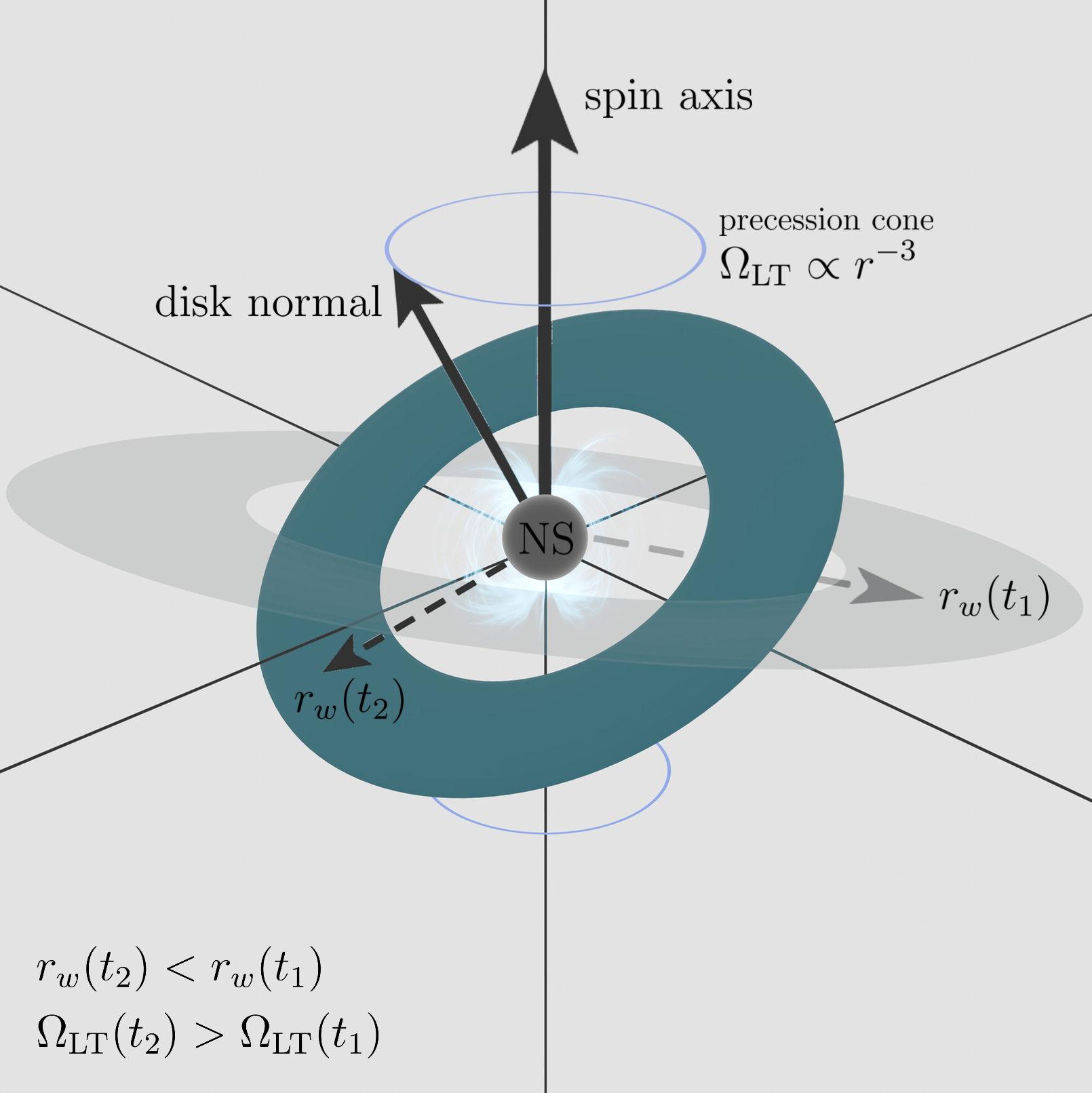
Publications: Farah et al. (accepted to Nature)
Thermonuclear Supernovae
Thermonuclear supernovae can be caused by accretion onto a white dwarf from a Roche lobe-filling binary companion. This means that a large portion of the ejecta is blocked by the companion, carving out a low-density wake. The shock-heated gas within this wake initially outshines the rest of the supernova, and because it protrudes from the unshocked ejecta it is visible from many angles. As the wake differs in composition from the unshocked ejecta, this also affects the nebular line emission profiles when the ejecta becomes optically thin.
Publications: Simotas et al. (2025), Kumar et al. (2025)
Check out this Astrobites article about our work!
Supernova Remnants (Thermonuclear)
The modifications to the ejecta structure discussed above affect the subsequent evolution as the gas expands to become a supernova remnant over thousands of years. We model such remnants using the expanding-grid hydrodynamics code Sprout, which allows us to follow the evolution of the remnant over several orders of magnitude in time.
We find that the forward shock is initially indented within the wake, but becomes spherical after ~1000 years. The reverse shock quickly traverses the wake and reaches the center of the remnant, leading to an asymmetrical bounce shock. This also affects the composition of the remnant by drawing material from the interstellar medium (ISM) into its center.
If both members of the binary are white dwarfs, the supernova may also ignite the companion and destroy both objects! This alters the structure of the ejecta and enriches it with additional heavy elements, impacting the remnant dynamics and X-ray emission. We find that line emission from light elements such as helium and nitrogen provides the best tool to differentiate between detonation mechanisms, as the distributions of these elements are most affected by the disparate remnant dynamics.
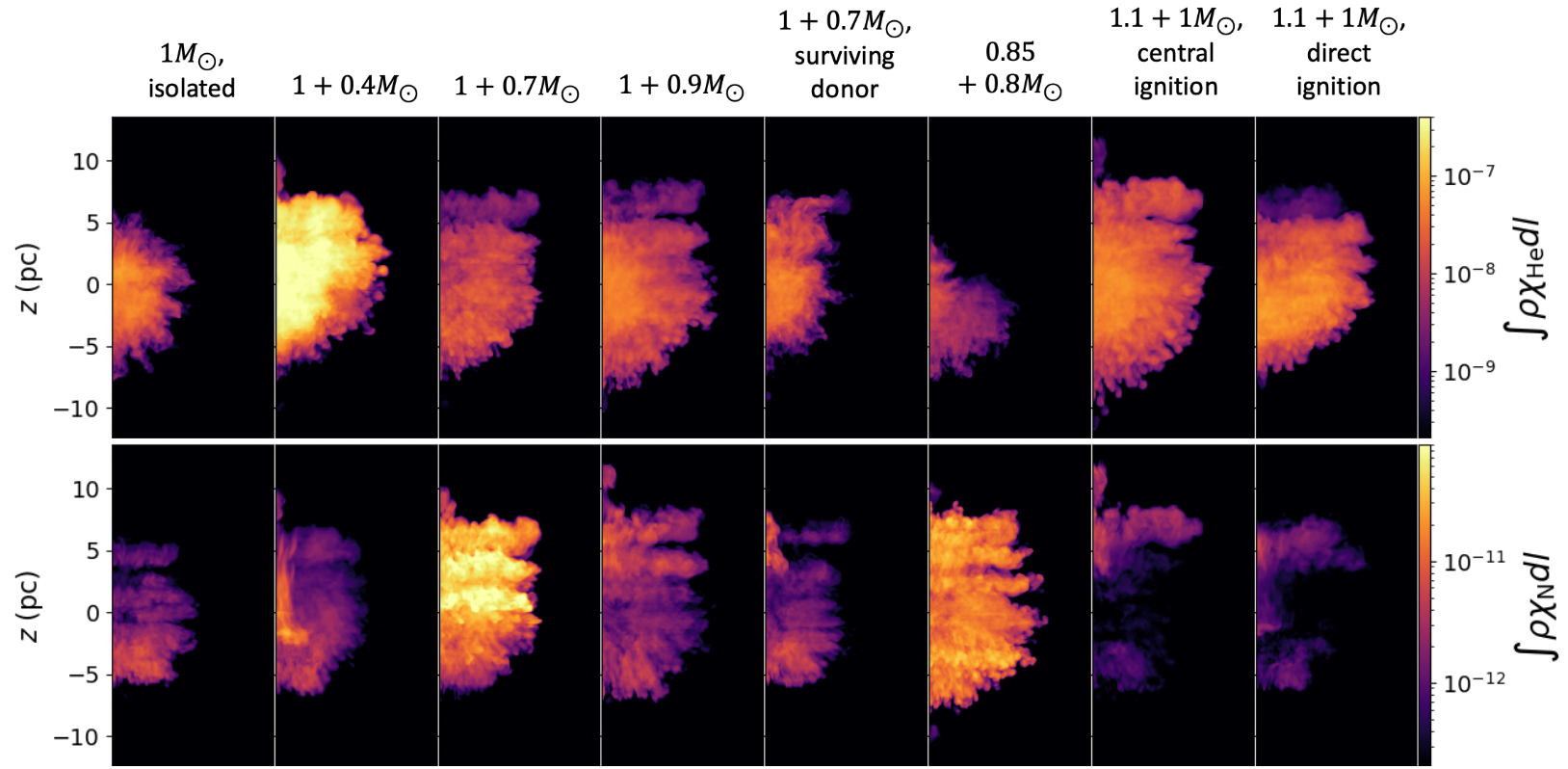
Publications: Prust et al. (2025), Prust et al. (2026)
Supernova Remnants (Core-Collapse)
When a star goes supernova, it launches a forward shock into the surrounding circumstellar medium (CSM) and sends a reverse shock backward though the ejecta. The shell of material between these shocks experiences Rayleigh-Taylor instabilities, creating turbulence which leads to synchrotron emission in the radio band. SNIIb are a subclass of supernovae which have lost most of their hydrogen envelope prior to exploding due to winds or binary interactions, and thus have a dense CSM. One such supernova is SN 1993J, which has been observed over a period of 30 years and can be compared to theoretical models to better understand the structure of the CSM and thus the mechanism of mass loss. To this end, we model SN 1993J using the 1-D hydrodynamics code RT1D, which has been calibrated to include the effects of 3-D turbulence.
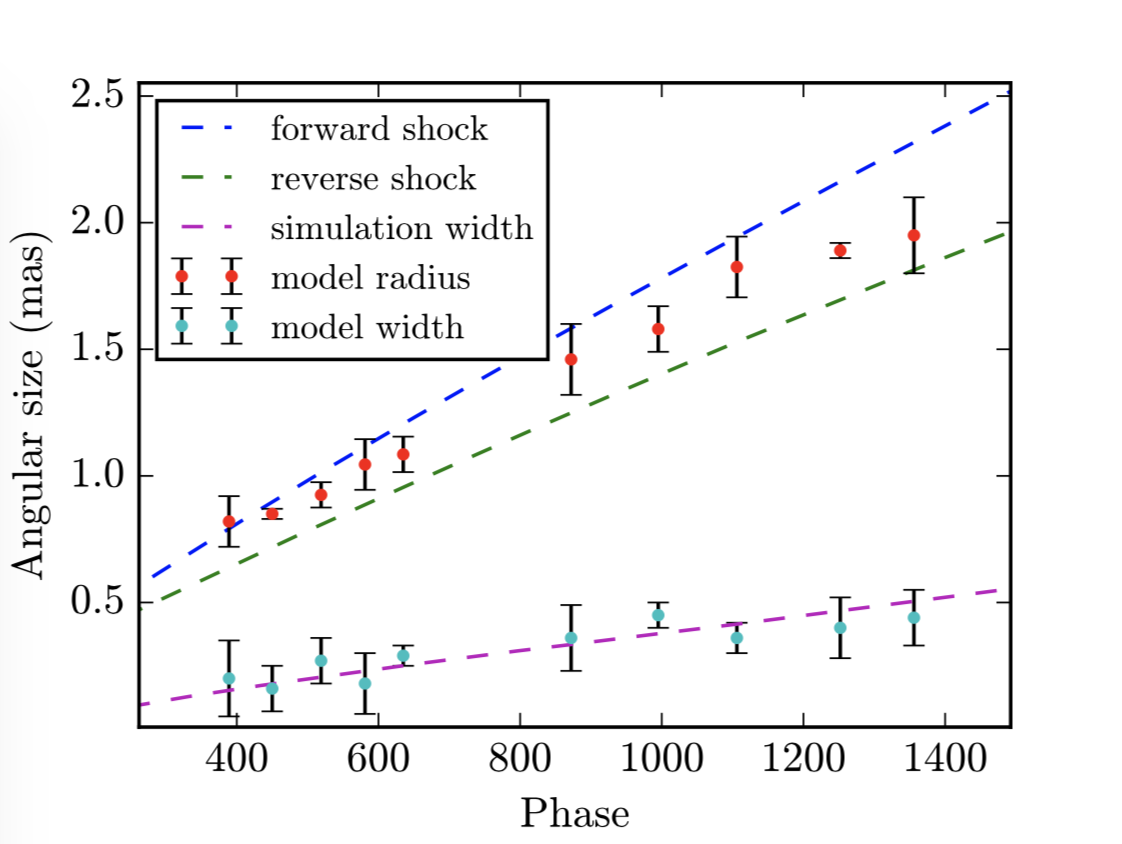
Publications: Farah et al. (2025), Prust/Farah et al. (in preparation)
Magnetohydrodynamics
Magnetism is important in many areas of astrophysics, such as in the dynamics of accretion disks and the formation of jets. The presence of the field also introduces new types of wave motion in the fluid, such as magnetosonic and Alfven waves. Magnetism can be implemented into hydrodynamic solvers by simply adding a few terms into the governing equations. However, numerical noise can lead to the formation of magnetic monopoles, violating Gauss's law of magnetism. I work on developing techniques to combat these monopoles by either damping them or smoothing them out.
Magnetism is thought to play a role in common envelope evolution, as magnetic pressure can shape the ejecta from a CE event over the course of many years. This phenomenon is thought to be responsible for the bipolar plumes of nebulae such as the Calabash Nebula, which are observed to be threaded by magnetic fields. Our magnetohydrodynamic solvers have shown the formation of the toroidal magnetic fields thought to drive these outflows.
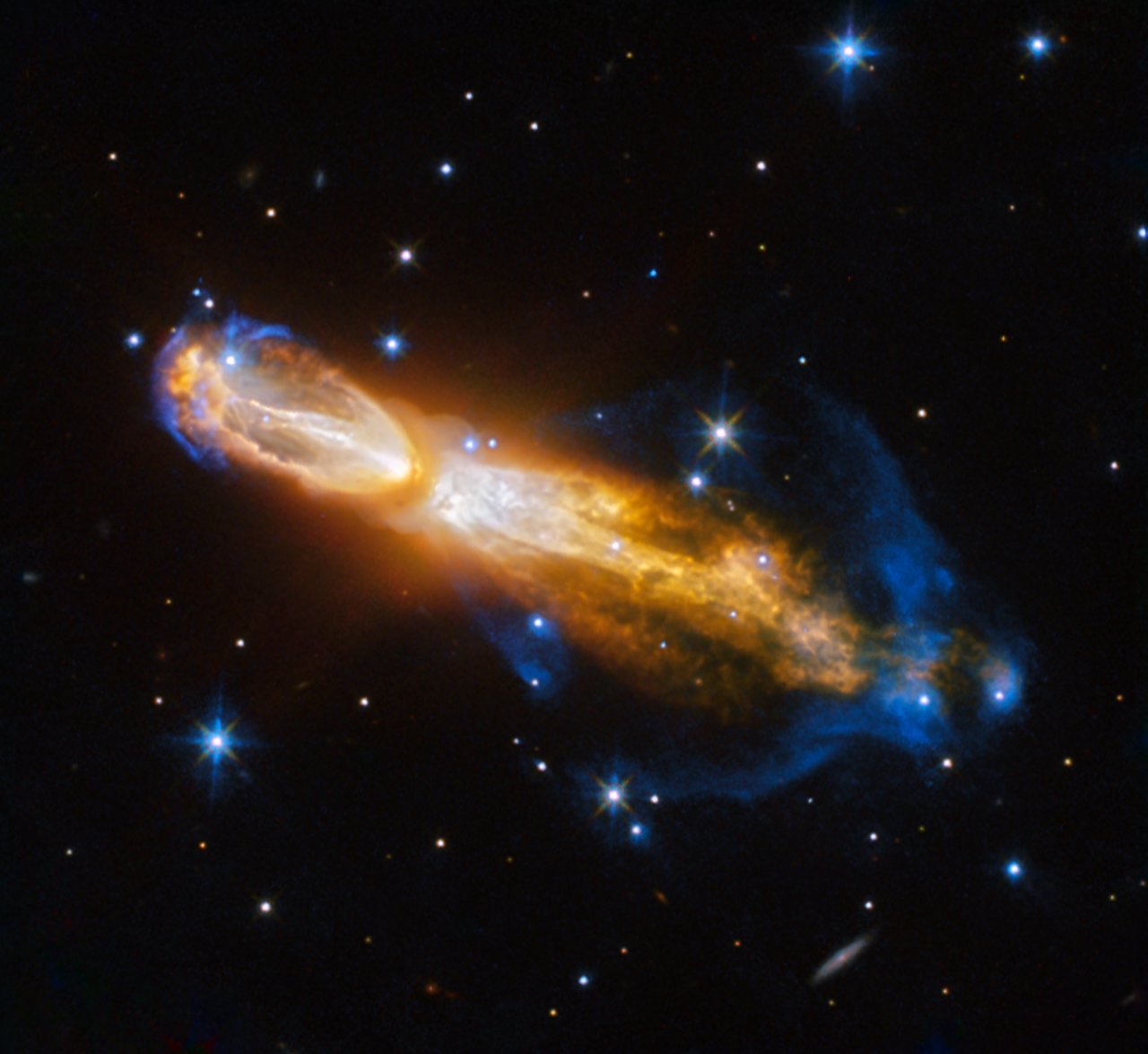
Publications: I should get around to publishing this
Simulation Techniques
When solving the hydrodynamic equations, there are two schools of thought, each of which has inherent strengths and weaknesses. The Lagrangian interpretation models the fluid as a collection of particles, while the Eulerian interpretation divides the space into a mesh. The moving-mesh method has been developed with the goal of combining the strengths of both, using a Voronoi tessellation to draw a dynamic mesh around a set of moving particles.

I am interested in the development of techniques for hydrodynamical modeling, particularly moving-mesh methods. Despite their high computational cost, moving meshes are well-suited to a variety of problems. For example, the presence of an inner boundary condition such as a reflection or accretion boundary is desirable for a variety of studies. The use of a moving mesh allows us to construct a boundary which moves throughout the simulation domain, possibly in response to gravitational or hydrodynamic forces.
Publications: Prust & Chang (2019), Prust (2020), Prust et al. (2025), Kumar et al. (2025)
Computational Resources
The calculations described above require a large amount of computational power. To that end, I am grateful for the use of the Stampede2 and Expanse supercomputers through the NSF ACCESS program as well as the Pleiades and Electra supercomputers through the NASA Advanced Supercomputing divison. I also use Rusty at the Flatiron Institute, the Mortimer HPC System at UWM, and the Pod cluster at the California NanoSystems Institute.
Student Mentoring
- Joseph Farah (Grad Student, Las Cumbres Observatory)
Co-authored multiple papers. - Gabriel Kumar (Undergrad, UCSB)
Co-authored a paper on radiation hydrodynamics of SN ejecta. - Kathlynn Simotas (Grad Student, UCSB)
Co-authored a paper on nebular emission lines in supernovae. - Hila Glanz (Grad Student, Technion)
Co-authored a paper on Bondi-Hoyle accretion. - Sarah Villanova-Borges (Grad Student, UWM)
Co-authored a paper on long-term evolution of CEE ejecta. - Vinaya Valsan (Grad Student, UWM)
Co-authored a paper and jointly developed data analysis package. - Sunny Wong (Grad Student, UCSB)
Collaborate on double-degenerate type Ia supernovae. - Ronan Humphrey (Grad Student, UWM)
Provide guidance on development of MANGA simulation code. - Alexandra Spaulding (Grad Student, UWM)
Provided guidance on setting up MANGA to model tidal disruption events.
Adjunct Assistant Professor (CUNY)
- Phys 85200/Astro 77700: Star & Planet Formation (Spring 2026)
Graduate Teaching Assistant (UWM)
- Phys 720: Electrodynamics I (Spring 2020)
- Phys 441: Introduction to Quantum Mechanics (Fall 2019)
- Physics Tutor (Fall 2019)
- Astron 103: Survey of Astronomy (Spring 2019)
- Phys 122: General Physics II, Non-Calculus Treatment (Fall 2017, Fall 2018)
- Phys 120: General Physics I, Non-Calculus Treatment (Spring 2018)
Undergraduate Teaching Assistant (ISU)
- Aer E 351: Astrodynamics I (Fall 2015, Spring 2016, Fall 2016)
- Aer E 192: Aerospace Seminar (Spring 2013)
Grader (ISU)
- EM 324: Mechanics of Materials (Summer 2016, Fall 2016)
- EM 274: Engineering Statics (Spring 2016)
- EM 345: Engineering Dynamics (Spring 2016)
- Aer E 310: Aerodynamics I (Fall 2015)
Other Service Work
- Abstract sorter and Chambliss poster judge for AAS meetings (2025, 2026)
- Subject-matter expert reviewer in a NASA peer review (2025)
- Postdoc Mentor for KITP Graduate Fellows (Fall 2024, Spring 2025)
- Organizer for the KITP Locals Lunch seminar series (2023–2024)
- Code of Conduct Committee, N-Body Shop Collaboration (2023)
- Referee for The Astrophysical Journal and Astronomy & Astrophysics
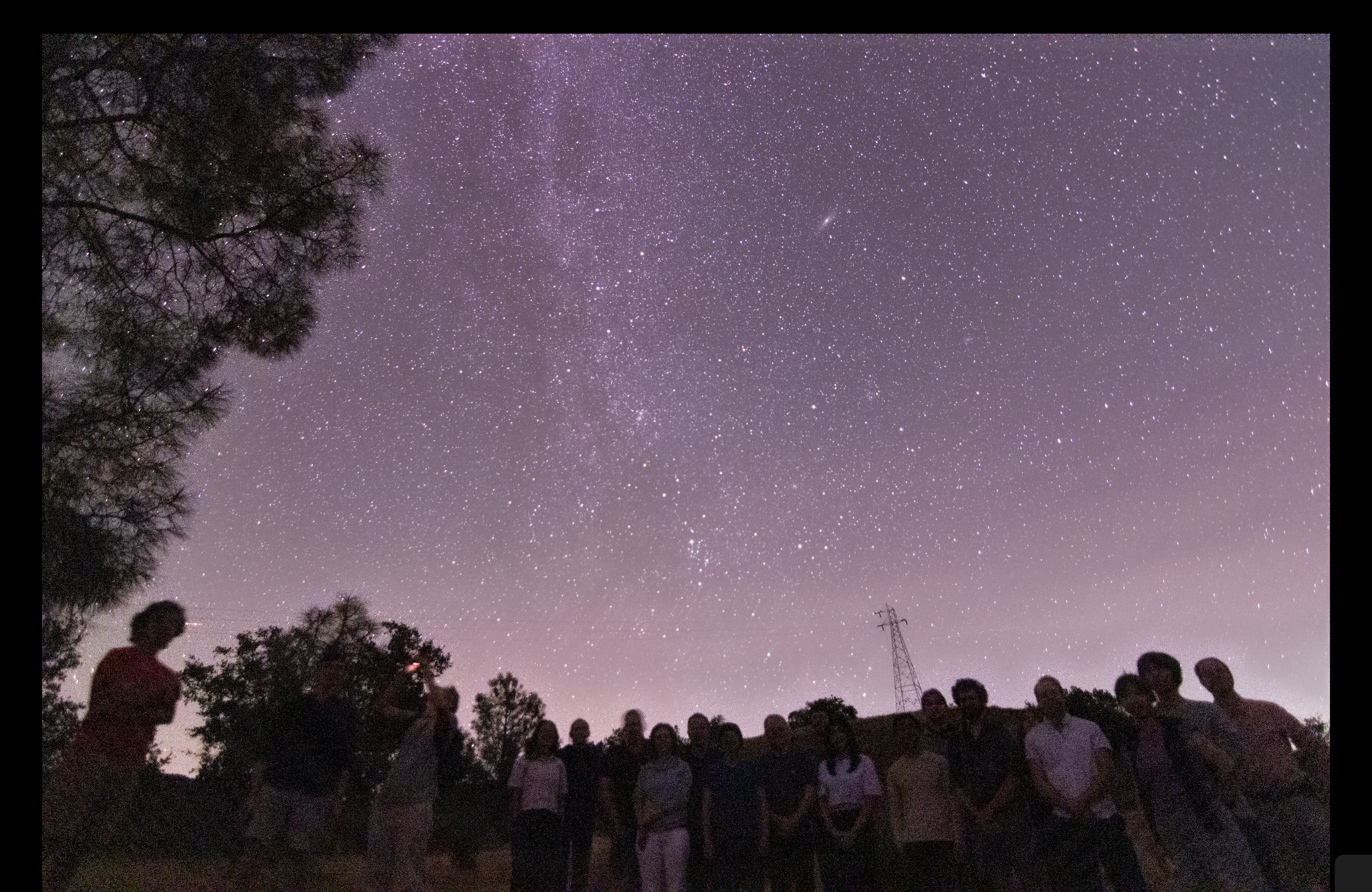
- Lense-Thirring Precessing Magnetar Engine Drives a Superluminous Supernova
Joseph R. Farah, Logan Prust, D. Andrew Howell, Yuan Qi Ni, Curtis McCully, Moira Andrews, Harsh Kumar, Daichi Hiramatsu, Sebastian Gomez, Kathryn Wynn, Alexei V. Filippenko, K. Azalee Bostroem, Edo Berger, Peter Blanchard
Accepted to Nature - Aspherical Remnants of Triple and Quadruple Detonations in Binary White Dwarfs
Logan Prust, Lars Bildsten, Samuel J. Boos
Accepted to The Astrophysical Journal - Companion Interaction Asymmetries in Type Ia Supernovae Nebular Emission Line Spectra
Kathlynn Simotas, Lars Bildsten, Logan Prust
Accepted to The Astrophysical Journal - The First 4 Years of SN 1993J Revisited: Geometric m-ring Modeling of the Radio Shell with Closure Quantities Only
Joseph Farah, Logan Prust, Giacomo Terreran, D. Andrew Howell, Michael Bietenholz, Norbert Bartel, Curtis McCully, Michael Johnson
Almost submitted to The Astrophysical Journal - The First Day of a Type Ia Supernova from a Double-Degenerate Binary
Gabriel Kumar, Logan Prust, Lars Bildsten
2025, The Astrophysical Journal, Volume 992, Issue 1, id.2, 11 pp. - Ejecta Wakes from Companion Interaction in Type Ia Supernova Remnants
Logan Prust, Gabriel Kumar, Lars Bildsten
2025, The Astrophysical Journal, Volume 982, Issue 1, id.60, 13 pp. - Shock-cooling Constraints via Early-time Observations of the Type IIb SN 2022hnt
J. Farah, D. A. Howell, G. Terreran, I. Irani, J. Morag, C. Pellegrino, C. McCully, M. Newsome, E. P. Gonzalez, A. Boestrom, G. Hosseinzadeh, M. Andrews, L. Prust, D Hiramatsu
2025, The Astrophysical Journal, Volume 984, Issue 1, id.60, 17 pp. - Morphology and Mach Number Dependence of Subsonic Bondi-Hoyle Accretion
Logan Prust, Hila Glanz, Lars Bildsten, Hagai Perets, Fritz Röpke
2024, The Astrophysical Journal, Volume 966, Issue 1, id.103, 11 pp. - Flow Morphology of a Supersonic Gravitating Sphere
Logan Prust & Lars Bildsten
2024, Monthly Notices of the Royal Astronomical Society, Volume 527, Issue 2, pp.2869-2886 - Envelope Ejection and the Transition to Homologous Expansion in Common-Envelope Events
Vinaya Valsan, Sarah Villanova-Borges, Logan Prust, Philip Chang
2023, Monthly Notices of the Royal Astronomical Society, Volume 526, Issue 4, pp.5365-5373 - The Effect of Hydrodynamic Forces on Common Envelope Evolution
Logan Prust
I should probably resubmit this to Monthly Notices of the Royal Astronomical Society - The Role of Radiation in Common Envelope Evolution
Logan Prust
2022, Proceedings of the Wisconsin Space Conference, doi: 10.17307/wsc.v1i1.346 - Moving Boundary Conditions in Common Envelope Evolution
Logan Prust
2022, Proceedings of the Wisconsin Space Conference, doi: 10.17307/wsc.v1i1.327 - Moving and Reactive Boundary Conditions in Moving-Mesh Hydrodynamics
Logan Prust
2020, Monthly Notices of the Royal Astronomical Society, Volume 494, Issue 4, pp.4616-4626 - Common Envelope Evolution on a Moving Mesh
Logan Prust
2020, Proceedings of the Wisconsin Space Conference, doi: 10.17307/wsc.v1i1.306 - Common Envelope Evolution on a Moving Mesh
Logan Prust & Philip Chang
2019, Monthly Notices of the Royal Astronomical Society, Volume 486, Issue 4, p.5809-5818

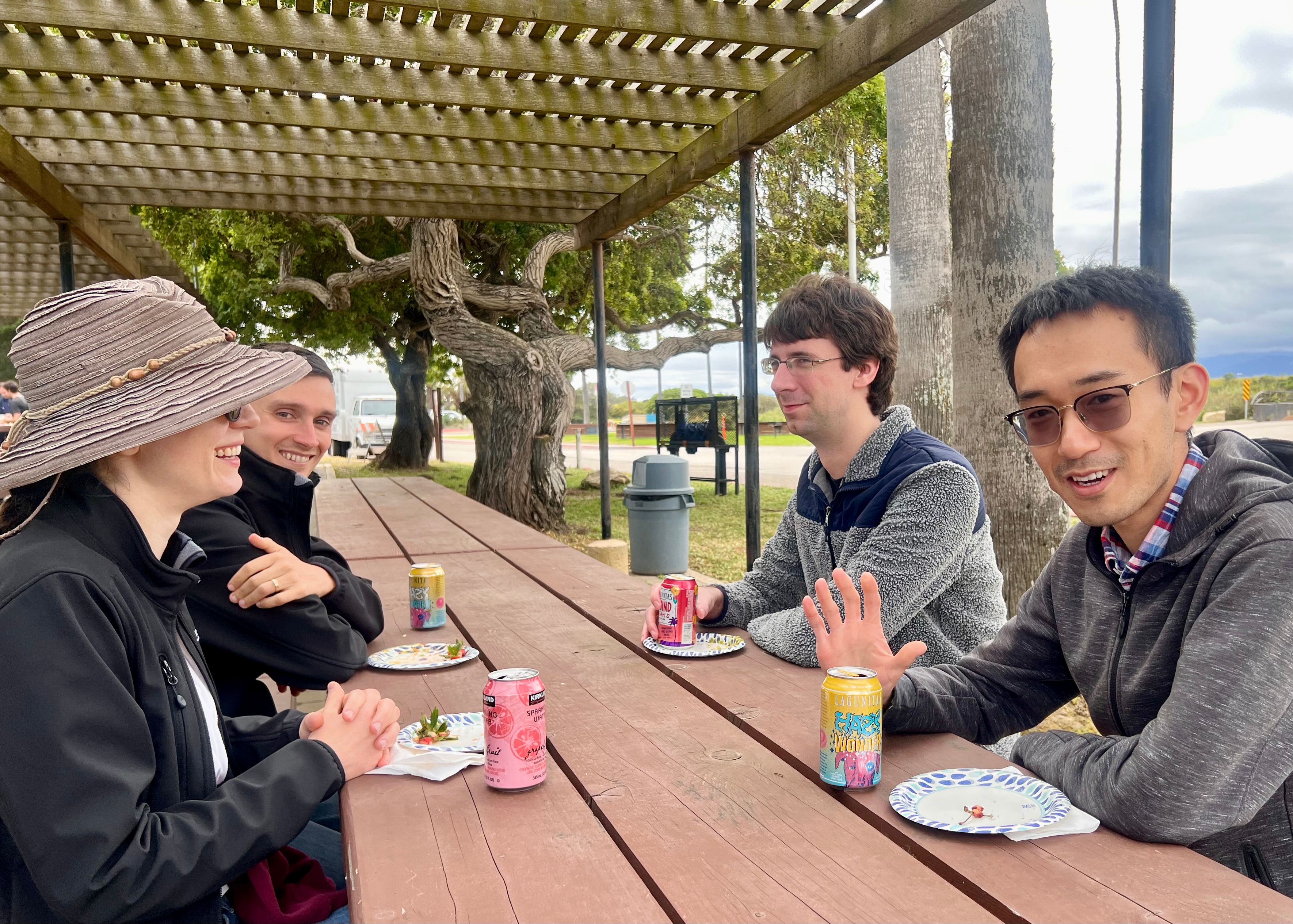
Conference and Seminar Talks
- The First Day of a Type Ia Supernova from a Double-degenerate Binary
Invited talk, SNEx Supernova Meeting Series
Virtual, Feb 2026
- Aspherical Remnants of Triple and Quadruple Detonations in Binary White Dwarfs
Session talk, AAS Winter Meeting
Phoenix, AZ, USA, Jan 2026
- Frame-Dragging Reveals Central Engine of Superluminous Supernova
Invited talk, CGCA Seminar
Milwaukee, WI, USA, Dec 2025
- Remnants of Triple and Quadruple Detonations in Binary White Dwarfs
Seminar talk, CCA Coffee Talks
New York, NY, USA, Oct 2025
- Lense-Thirring Precessing Magnetar Engine Drives a Superluminous Supernova
Blackboard talk, KITP Locals Lunch
Santa Barbara, CA, USA, July 2025
- Remnants of Quadruple Detonations in Binary White Dwarfs
Seminar talk, Graduate Simulation Seminar Series (GS3)
Santa Barbara, CA, USA, July 2025
- Remnants of Double and Quadruple Detonations in Binary White Dwarfs
Seminar talk, UCSB Astro Lunch
Santa Barbara, CA, USA, July 2025 - Ejecta Wakes from Companion Interaction in Type Ia Supernova Remnants
ePoster, EAS Annual Meeting
Cork, Ireland, June 2025
[View ePoster] - Remnants of Double and Quadruple Detonations in Binary White Dwarfs
Invited talk, TAPIR Seminar
Pasadena, CA, USA, May 2025
- Remnants of Double-Degenerate Type Ia Supernovae
Invited talk, CGCA Seminar
Milwaukee, WI, USA, Feb 2025
- Ejecta Wakes from Companion Interaction in Type Ia Supernova Remnants
Poster, AAS Winter Meeting
Oxon Hill, MD, USA, Jan 2025
[View ePoster] - A Birdwatcher's Guide to D6 Supernova Remnants
Contributed talk, ZTF Theory Network Meeting
Santa Margarita, CA, USA, Sept 2024
- Evolution of Ejecta Wakes in Supernova Remnants
Poster, Rise_Time 2024: Explosive Astrophysics in the Era of High-Cadence Astronomy
West Lafayette, IN, USA, Aug 2024
[Download ePoster] - Shock Waves in Asymmetrical Supernova Remnants
Seminar talk, Graduate Simulation Seminar Series (GS3)
Santa Barbara, CA, USA, July 2024
- Reverse Shocks in D6 Supernovae
Contributed talk, ZTF Theory Network Meeting: WD Detonations
Cambria, CA, USA, June 2024
- Shock Trajectories in Asymmetrical Supernova Remnants
Blackboard talk, KITP Locals Lunch
Santa Barbara, CA, USA, May 2024
- Morphology and Entropy Dependence of Subsonic Bondi-Hoyle Accretion
Seminar talk, UCSB Astrophysics Theory Seminar
Santa Barbara, CA, USA, Oct 2023
- Black Hole Accretion as a Nozzle Flow
Blackboard talk, KITP Locals Lunch
Santa Barbara, CA, USA, Oct 2023
- Flow Morphology in Planetary Engulfment Events
Contributed talk, ZTF Theory Network Meeting
Santa Margarita, CA, USA, Sept 2023
- Hydrodynamical Simulation Techniques in Astrophysics
Seminar talk, Graduate Simulation Seminar Series (GS3)
Santa Barbara, CA, USA, Aug 2023
- Flow Morphology in Planetary Engulfment Events
ePoster, EAS Annual Meeting
Krakow, Poland, July 2023
[Download ePoster] - Managing Friction in Planet-Star Relationships
Seminar talk, UCSB Astrophysics Theory Seminar
Santa Barbara, CA, USA, May 2023 - Planetary Engulfment in Athena++
Session talk, Flatiron Athena++ Workshop
New York, NY, USA, May 2023 - Flow Morphology of a Supersonic Gravitating Sphere
Blackboard talk, KITP Locals Lunch
Santa Barbara, CA, USA, Apr 2023 - Flow Morphology in Post-Main Sequence Planetary Engulfment
Seminar talk, UCSB Astro Lunch
Santa Barbara, CA, USA, Apr 2023 - Long-Term Evolution in Simulations of the Common Envelope Phase
Contributed talk, ZTF Theory Network Meeting
Santa Margarita, CA, USA, Sept 2022 - Modeling Common Envelopes on a Moving Mesh
Blackboard talk, KITP Locals Lunch
Santa Barbara, CA, USA, Sept 2022 - Simulating the Common Envelope Phase on a Moving Mesh
Session talk, Flatiron N-Body Workshop
New York, NY, USA, June 2022 - New Physics in Simulations of the Common Envelope Phase
Session talk, Midwest Relativity Meeting
Champaign, IL, USA, Nov 2021 - Moving Boundary Conditions in Common Envelope Evolution
Contributed talk, Common Envelope Physics and Outcomes
Virtual, Aug 2021 - Simulating Common Envelope Evolution on a Moving Mesh
Session talk, Wisconsin Space Conference
Milwaukee, WI, USA, Aug 2021 - Moving and Reactive Boundary Conditions on a Moving Mesh
Contributed talk, N-Body Shop Excellence Conference
Virtual, Jan 2021 - Moving Boundary Conditions in Common Envelope Evolution
Session talk, Midwest Relativity Meeting
Notre Dame, IN, USA, Oct 2020 - Simulating the CE Phase Using Moving-Mesh Hydrodynamics
Contributed talk, EAS Annual Meeting
Leiden, Netherlands, July 2020 - Moving-Mesh Hydrodynamics Using MANGA
Seminar talk, CGCA Seminar
Milwaukee, WI, USA, Dec 2019 - Simulating the Common Envelope Phase in Binary Stars
Seminar talk, Wisconsin Space Conference
Platteville, WI, USA, Aug 2019 - CEE on a Moving Mesh with MANGA
Contributed talk, Flatiron CEE Workshop
New York, NY, USA, May 2019 - Common Envelope Evolution on a Moving Mesh
Session talk, Midwest Relativity Meeting
Milwaukee, WI, USA, Oct 2018
Other Workshops Attended
- TARDIS Summer School
Michigan State University
East Lansing, MI, USA, July 2025 - KITP Infant Supernovae Meeting
Kavli Institute for Theoretical Physics
Santa Barbara, CA, USA, Mar 2025 - Stellar Interactions and the Transients They Cause
Aspen Center for Physics
Aspen, CO, USA, July 2023 - Physics and Astrophysics of Common Envelopes (PACE)
Los Alamos National Laboratory
Los Alamos, NM, USA, May 2022 - MESA Summer School
UC Santa Barbara
Santa Barbara, CA, USA, Aug 2019 - Various KITP Programs:
- White Dwarfs from Physics to Astrophysics
- Multiphase Flows in Geophysics and the Environment
- Turbulence in Astrophysical Environments
- Towards a Physical Understanding of Tidal Disruption Events
- Dark Matter Theory, Simulation, and Analysis in the Era of Large Surveys
- Interconnections between the Physics of Plasmas and Self-gravitating Systems
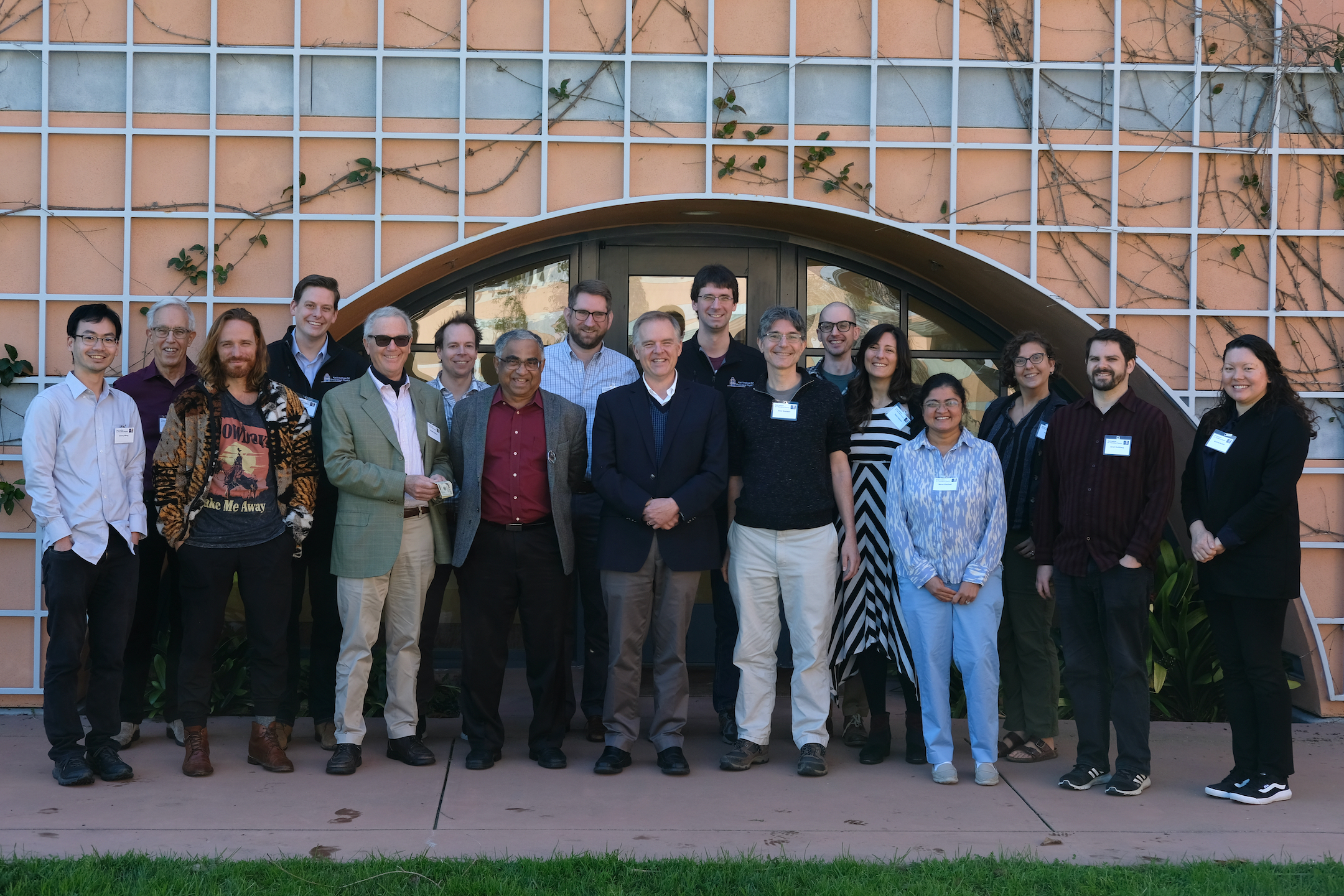
Download my CV here.
Office: 510A, Flatiron Institute, 162 5th Ave Office
Email: lprust (at) flatironinstitute (dot) org
Top photo credit: Jeff Liang, UCSB
